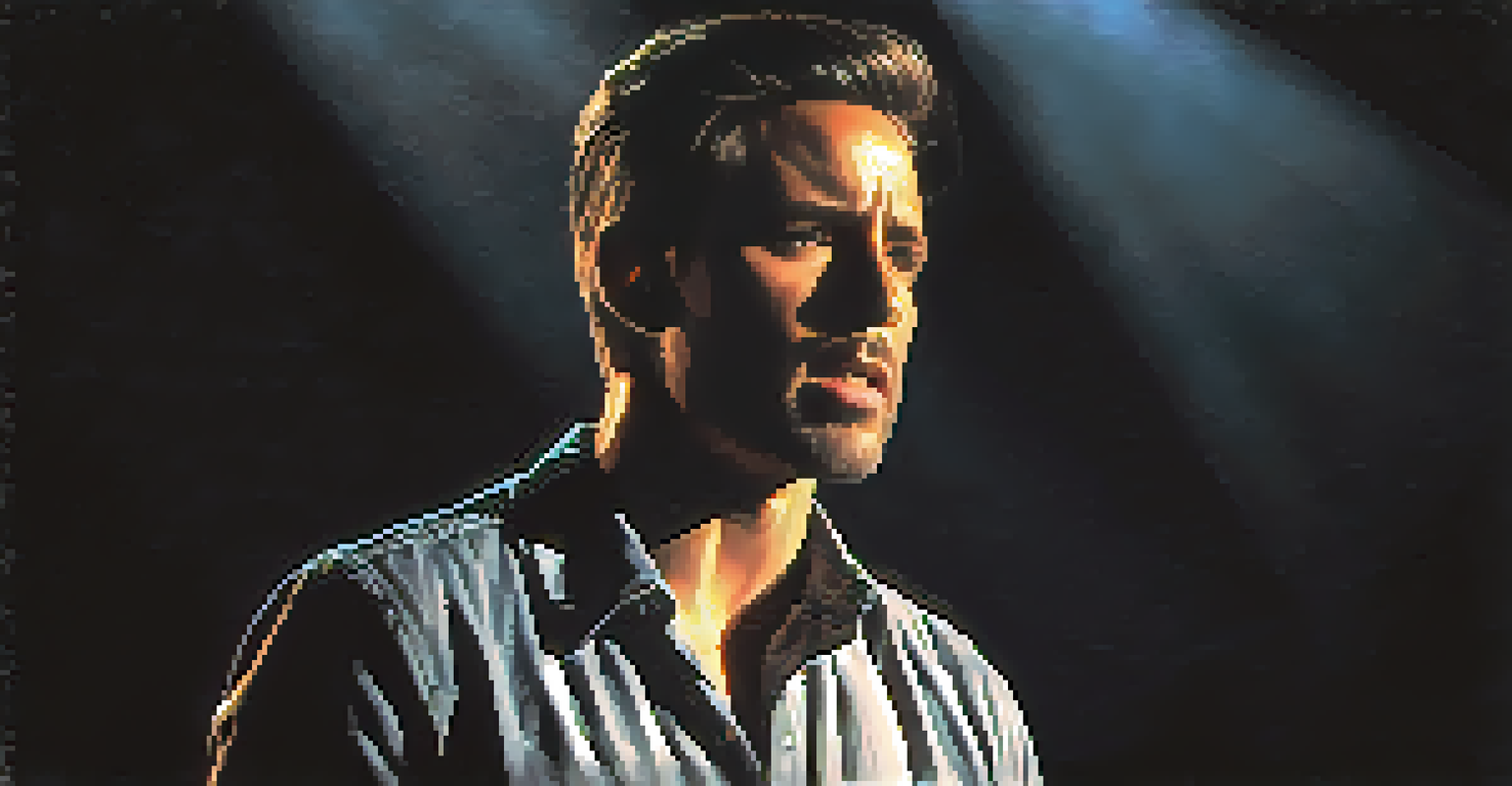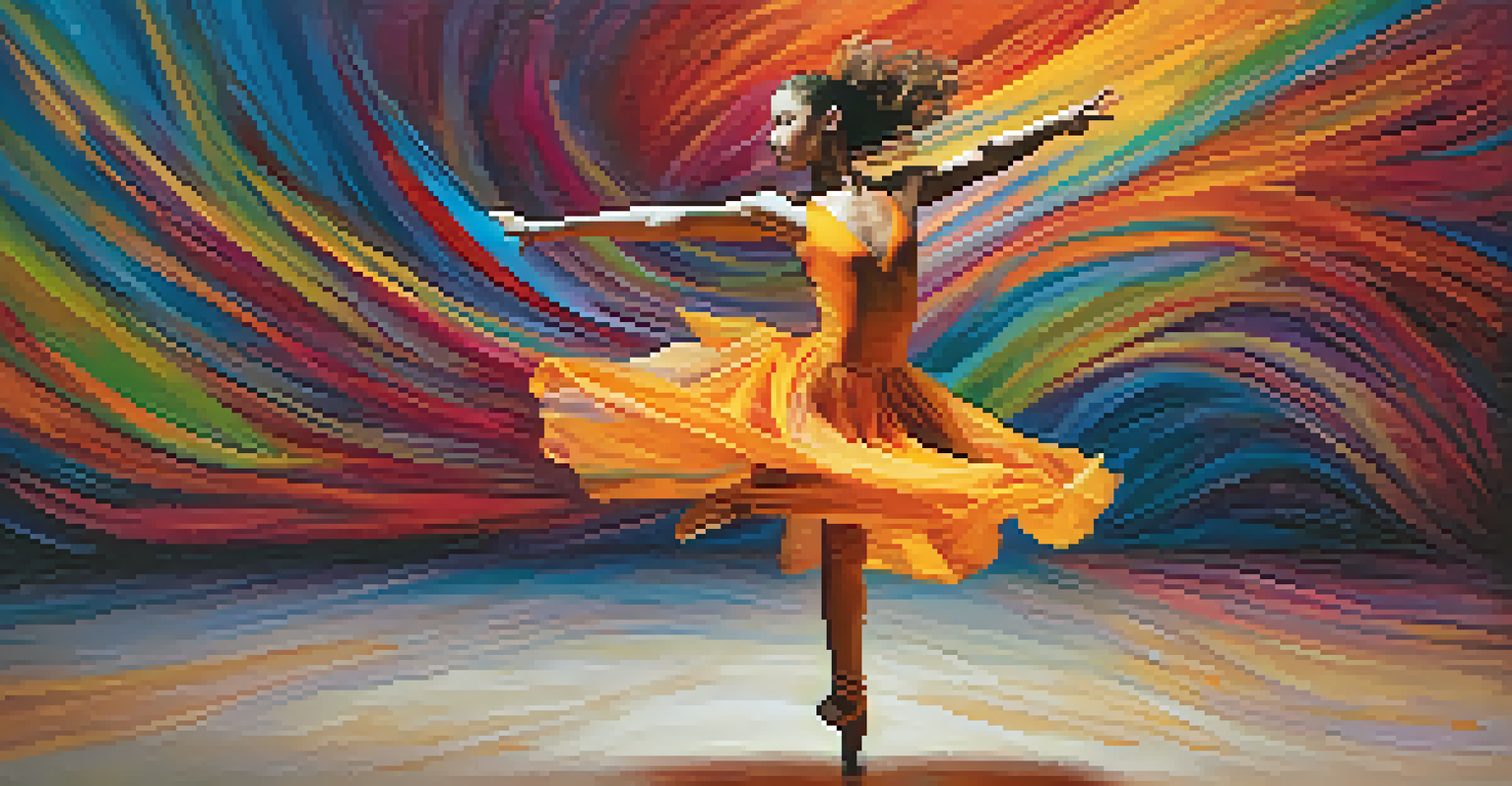Using Dynamics in Performance: Techniques for All Genres

Understanding Dynamics: The Heart of Performance
Dynamics in performance refer to the variation in loudness between notes or phrases. They play a crucial role in conveying emotion and setting the tone of a piece. For instance, a sudden shift from a soft whisper to a booming sound can create an impactful moment that captures the audience's attention.
Music is the shorthand of emotion.
In music, dynamics are often notated with symbols like 'p' for piano (soft) and 'f' for forte (loud). However, in other performance arts, such as acting or dance, dynamics can manifest through changes in energy, pace, and intensity. An actor might deliver a line softly to draw the audience in, only to explode with energy in the following moment, creating a powerful contrast.
Understanding and mastering dynamics is essential for performers in any genre. It allows them to express the nuances of their art and engage audiences on a deeper level. By playing with dynamics, performers can transform a standard piece into a captivating experience.
The Role of Dynamics in Music Performance
In music, dynamics help shape the emotional landscape of a composition. A piece that remains at a constant volume can feel monotonous, while varied dynamics can evoke a rollercoaster of feelings. Think of a symphony where gentle strings lead into a thunderous brass section; it’s this contrast that keeps listeners on the edge of their seats.

Musicians can also use dynamics to highlight specific moments in their performance, such as a climactic solo or a poignant melody. By carefully manipulating volume and intensity, they guide the audience's emotional journey. This technique is not just about playing louder or softer; it's about making strategic choices that enhance the overall story of the piece.
Dynamics Shape Emotional Impact
Variations in loudness and intensity are crucial for conveying emotion and enhancing the narrative in music, acting, and dance.
Moreover, dynamics are not just limited to the notes themselves but can also involve timing and articulation. A well-timed pause can amplify a soft note, making it resonate even more with the audience. Mastering these elements is key to a compelling musical performance.
Dynamics in Acting: Creating Emotional Impact
In acting, dynamics can be illustrated through vocal modulation and physicality. An actor's ability to shift their voice from a soft, intimate whisper to a commanding shout can convey a character's journey and emotional state. This dynamic range allows the audience to connect with the character on a personal level.
Acting is behaving truthfully under imaginary circumstances.
For example, during a tense moment in a scene, an actor may lower their voice to draw the audience in, creating a sense of intimacy. In contrast, during a climactic confrontation, raising their voice can convey urgency and intensity. This play between soft and loud, subtle and overt, is what keeps audiences engaged.
Furthermore, dynamics can also be expressed through body language. A character's stillness can create tension, while sudden movements can evoke surprise or excitement. By mastering these dynamics, actors can elevate their performances and leave a lasting impression on viewers.
Dance and Dynamics: Movement with Emotion
In dance, dynamics manifest through variations in speed, force, and energy levels. A dancer might execute a series of rapid, powerful movements, followed by slow, fluid transitions. This interplay captures the audience's attention and communicates the emotional narrative of the piece.
For example, a contemporary ballet performance may juxtapose sharp, vigorous movements with moments of stillness. This contrast not only engages the audience visually but also allows them to feel the emotional weight of the performance. It's a dance of contrasts, where every shift in dynamics tells a part of the story.
Audience Engagement Influences Performance
Performers often adjust their dynamics based on audience reactions, creating a dynamic interplay that enhances the overall performance experience.
Moreover, the use of dynamics in dance is often tied to the music. Dancers who are attuned to the dynamics of the accompanying score can enhance their expressions and movements, creating a seamless connection between sound and motion. This synergy amplifies the overall impact of the performance.
Techniques for Incorporating Dynamics into Performance
One effective technique for incorporating dynamics is to practice with a metronome or backing track that emphasizes different volumes. This can help performers become more aware of how dynamics affect their delivery and timing. For instance, practicing a piece at varying intensities can lead to a deeper understanding of how volume influences emotion.
Another technique is to experiment with silence. Often, the absence of sound can be as powerful as music or dialogue. By incorporating pauses or quiet moments, performers can create tension and anticipation, making the subsequent sounds more impactful. This technique is particularly useful in both music and spoken performance.
Finally, seeking feedback from peers or mentors can provide valuable insights into a performer’s dynamic range. Constructive criticism can help identify areas for improvement and highlight the effectiveness of dynamic choices. Embracing this feedback loop is essential for growth and mastery in any artistic discipline.
Genre-Specific Dynamics: Tailoring Your Approach
Different genres often require unique approaches to dynamics. For instance, classical music typically emphasizes a wide range of dynamics, from subtle pianissimos to powerful fortissimos. In contrast, pop music may favor a more consistent volume but can still use dynamics strategically in choruses or bridges to create emphasis.
Similarly, in acting, the dynamics of a dramatic play may differ significantly from those in a comedic skit. Dramatic performances often rely on deep emotional shifts, while comedies might use exaggerated dynamics for comedic effect. Understanding the expectations of each genre allows performers to tailor their dynamic choices accordingly.
Mastering Dynamics Elevates Artistry
Understanding and manipulating dynamics allows performers to transform their work from ordinary to extraordinary, fostering emotional connections with audiences.
Dance genres also vary in their dynamic expression. Contemporary dance might prioritize fluidity and emotional expression, while hip-hop may focus on sharp, rhythmic movements. By being aware of these genre-specific nuances, performers can enhance their work and resonate more deeply with their audience.
The Impact of Audience on Dynamics in Performance
Audience engagement plays a significant role in shaping dynamics during a performance. Performers often adjust their volume and intensity based on audience reactions, creating a dynamic interplay between the two. For example, a performer may choose to play softly during a quiet moment if they notice the audience is deeply engaged.
Additionally, the energy level of the audience can influence a performer's dynamics. A lively crowd can encourage more energetic and louder performances, while a quieter audience may lead to more subdued expressions. This responsiveness to the audience enhances the overall experience for both parties.

Ultimately, recognizing the audience's role in dynamics fosters a deeper connection between performer and spectator. It creates a shared experience that can elevate the performance beyond the individual artistry, making it a memorable event for everyone involved.
Conclusion: Mastering Dynamics for Engaging Performance
Mastering dynamics is a vital skill for performers across various genres. By understanding how to manipulate volume, intensity, and energy, artists can create compelling narratives that resonate with audiences. The journey of exploring dynamics is not just about technical proficiency; it’s about emotional expression and connection.
Whether in music, acting, or dance, the application of dynamics can transform a performance from ordinary to extraordinary. Each performer has a unique voice, and dynamics allow that voice to shine through. By embracing the power of dynamics, artists can elevate their craft and captivate their audiences.
In the end, the beauty of performance lies in its ability to convey emotions and stories. By mastering the techniques of dynamics, performers can ensure that their messages are not just heard but felt, leaving a lasting impact on their audiences.